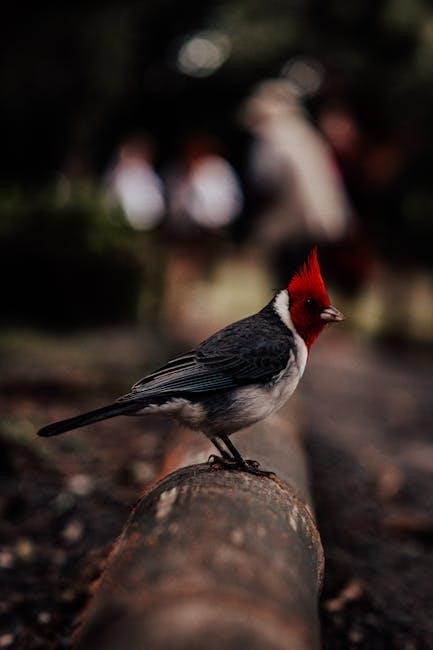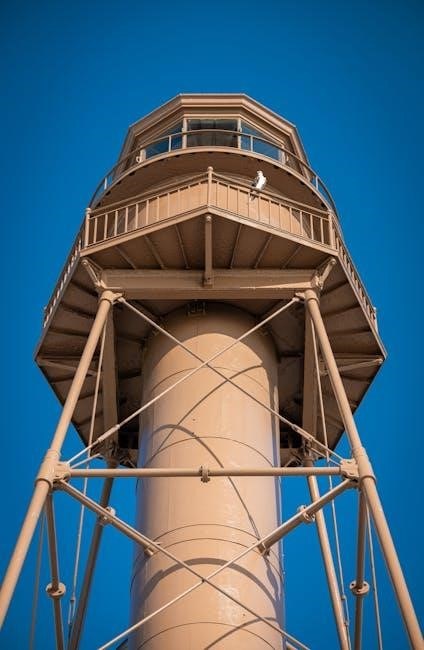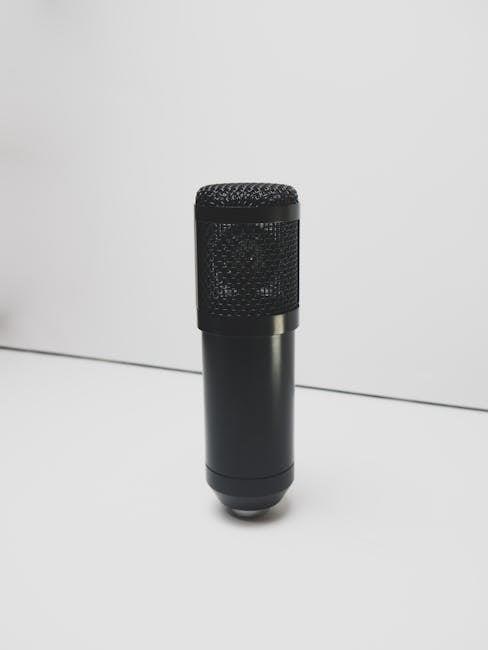Hawaii is home to a unique array of bird species, showcasing remarkable diversity and adaptability. From endemic natives to introduced species, the islands’ avian life reflects its isolated evolutionary history and the challenges of conservation.
Overview of Hawaii’s Avian Diversity
Hawaii’s avian diversity is a remarkable blend of native and introduced species, shaped by its geographic isolation and unique ecosystems. The islands are home to over 130 bird species, with many being endemic, such as the Nene and Hawaiian crow. Native birds have evolved distinct adaptations, like specialized beaks and feeding behaviors, to thrive in Hawaii’s isolated environment. Introduced species, such as zebra doves and Java sparrows, have also established populations, impacting local ecosystems. This diversity highlights Hawaii’s role as a global birdwatching destination, offering insights into evolutionary biology and conservation challenges.
Importance of Bird Conservation in Hawaii
Bird conservation in Hawaii is crucial due to the islands’ high rate of endemism and the severe threats native species face. Many birds, like the Hawaiian crow and Nene, are critically endangered. Habitat loss, invasive predators, and climate change exacerbate these threats. Conservation efforts are vital to protect these unique species and maintain ecological balance. Programs such as habitat restoration and species recovery play a key role in safeguarding Hawaii’s avian heritage for future generations.
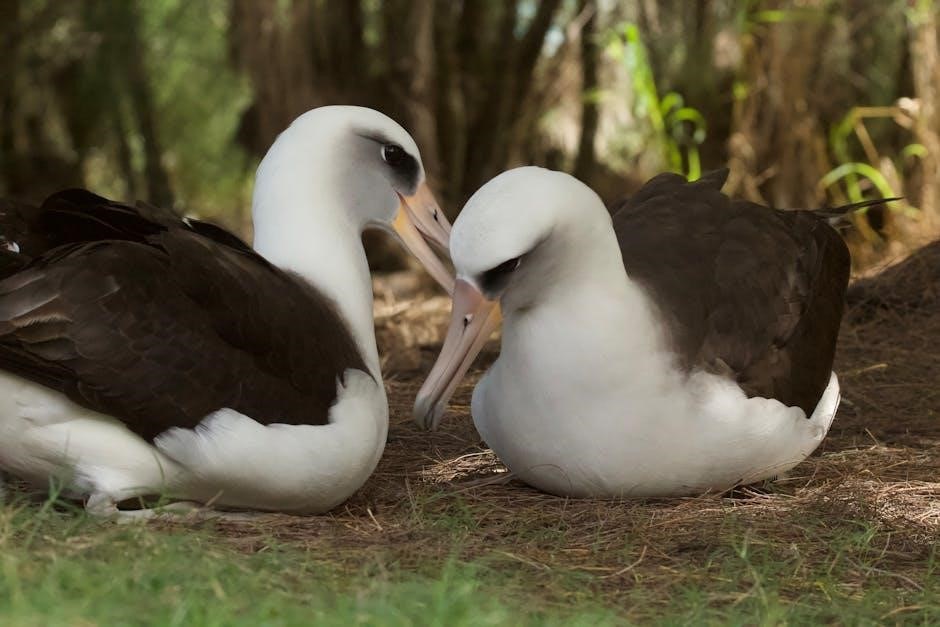
Native Birds of Hawaii
Hawaii’s native birds are a testament to the islands’ unique biodiversity, with many species evolving in isolation. These birds play vital roles in maintaining Hawaii’s ecosystems and cultural heritage.
The Nene: Hawaii’s State Bird
The Nene, or Hawaiian Goose, is Hawaii’s beloved state bird and a symbol of resilience. This endangered species, once nearly extinct, has seen a gradual recovery due to conservation efforts. The Nene primarily grazes on grasses and berries, nesting among lava flows in monogamous pairs. Their unique adaptations to Hawaii’s rugged landscapes highlight their ecological importance. Despite threats like introduced predators and habitat loss, the Nene remains a cherished emblem of Hawaiian culture and biodiversity, embodying the islands’ fragile yet vibrant natural heritage.
Endemic Species and Their Unique Adaptations
Hawaii’s endemic bird species are a testament to the islands’ unique evolutionary history. These birds, found nowhere else on Earth, have developed remarkable adaptations to thrive in Hawaii’s isolated ecosystems. The Hawaiian Crow, or ʻAlalā, is one such species, known for its intelligence and ecological role. Other endemic birds, like the Palila, have specialized beaks and diets, reflecting their adaptation to specific habitats. These species play crucial roles in pollination, seed dispersal, and forest regeneration, making them indispensable to Hawaii’s biodiversity. However, many are critically endangered due to habitat loss, invasive predators, and climate change, underscoring the urgent need for conservation efforts to protect these avian treasures.
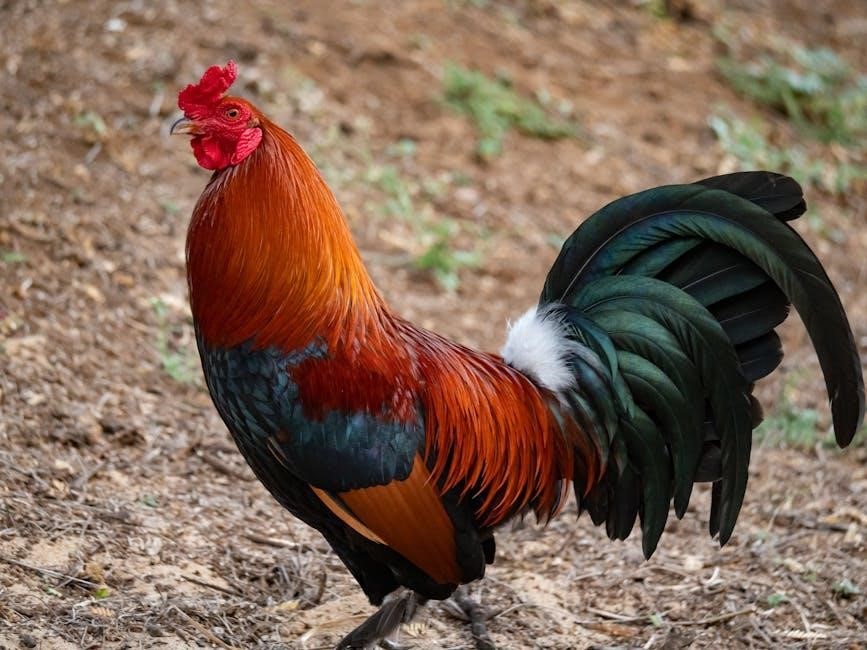
Introduced Birds in Hawaii
Introduced species like the Zebra Dove, Java Sparrow, and Rose-ringed Parakeet have thrived in Hawaii, often outcompeting natives. These birds, originating from Asia, now inhabit urban and natural areas.
Zebra Doves and Their Impact on Ecosystems
Zebra Doves, native to Southeast Asia, were introduced to Hawaii in the 1920s and have since spread widely. These small, seed-eating birds are known for their distinctive black and white stripes and gentle cooing calls. They primarily forage on the ground, consuming grass seeds, insects, and small invertebrates, which can impact local vegetation and native insect populations. Zebra Doves are also attracted to urban areas, frequenting parks, gardens, and even outdoor restaurants, where they can become quite bold. Their presence has raised concerns about competition with native birds for resources, potentially altering ecosystem dynamics and contributing to the decline of endemic species.
Java Sparrows and Other Invasive Species
Java Sparrows, native to Indonesia, were introduced to Hawaii in the 1960s and have since become widespread. These social birds, known for their gray bodies with rosy bellies and distinctive white cheek patches, thrive in urban and agricultural areas. They primarily consume seeds, posing a threat to crops and native ecosystems. Their presence has led to competition with native bird species for food and nesting sites, exacerbating the decline of Hawaii’s unique avifauna. Other invasive species, such as the Rose-ringed Parakeet, have also established populations, further complicating conservation efforts and highlighting the urgent need for measures to mitigate their ecological impact.
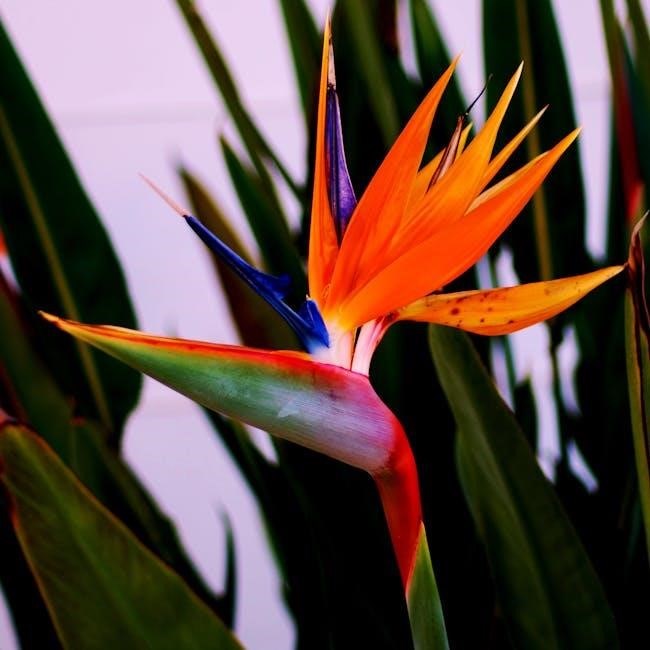
Habitat Diversity
Hawaii’s varied ecosystems support a wide range of bird habitats, from lush rainforests to arid coastal regions, each fostering unique avian communities and adaptations.
Forest Birds and Their Roles in Ecosystems
Hawaiian forest birds are integral to maintaining the balance of native ecosystems. Species like the Hawaiian honeycreepers, with their specialized beaks, play crucial roles in pollination and seed dispersal. These birds, adapted to high-elevation rainforests, contribute to the survival of native plants by transferring pollen and spreading seeds. Their foraging behaviors also help control insect populations, protecting vegetation from damage. Forest birds are key indicators of ecosystem health, reflecting the overall condition of Hawaii’s delicate environments. Unfortunately, many of these species are threatened by habitat loss and invasive predators, emphasizing the need for conservation efforts to preserve their vital ecological roles.
Coastal and Wetland Birds of Hawaii
Hawaii’s coastal and wetland birds are vital to the islands’ ecosystems. Species like the Hawaiian Black-necked Stilt and Hawaiian Coot thrive in wetlands, using their unique adaptations to forage for small aquatic organisms. These birds play a crucial role in controlling insect and fish populations, maintaining the balance of their environments. The Common Gallinule is another notable species, often seen in freshwater habitats, contributing to seed dispersal and nutrient cycling. Wetland birds also serve as indicators of ecosystem health, highlighting the impact of habitat degradation. Conservation efforts focus on protecting these areas to ensure the survival of these specialized birds, which are integral to Hawaii’s coastal and wetland biodiversity.
Conservation Efforts
Protected areas and recovery programs are essential for safeguarding Hawaii’s endangered birds. Efforts focus on habitat restoration, predator control, and breeding initiatives to ensure species survival and ecosystem balance.
Threats to Native Bird Populations
Hawaii’s native birds face severe threats from invasive species, habitat loss, and climate change. Introduced predators like rats, mongooses, and feral cats devastate bird populations by preying on eggs and chicks. Habitat destruction, particularly the loss of native forests, further endangers species by reducing their living and breeding spaces. Climate change exacerbates these issues by altering ecosystems and potentially introducing new diseases. Additionally, avian malaria, spread by mosquitoes, poses a significant threat to native birds, especially honeycreepers. These combined threats have led to the extinction of many bird species and continue to imperil those remaining, necessitating urgent conservation actions to protect Hawaii’s unique avian biodiversity.
Protected Areas and Recovery Programs
Hawaii’s protected areas and recovery programs play a vital role in safeguarding its native bird populations. National wildlife refuges, such as the James Campbell National Wildlife Refuge, provide critical habitats for endangered species like the Hawaiian coot and gallinule. The Nene recovery program focuses on breeding and reintroducing this iconic goose into the wild. Sanctuaries and conservation zones are essential for protecting forest birds and their habitats from invasive species. Additionally, captive breeding programs for the Hawaiian crow and other critically endangered birds aim to replenish wild populations. These efforts, combined with habitat restoration and predator control, are essential for the survival and recovery of Hawaii’s unique avian species.
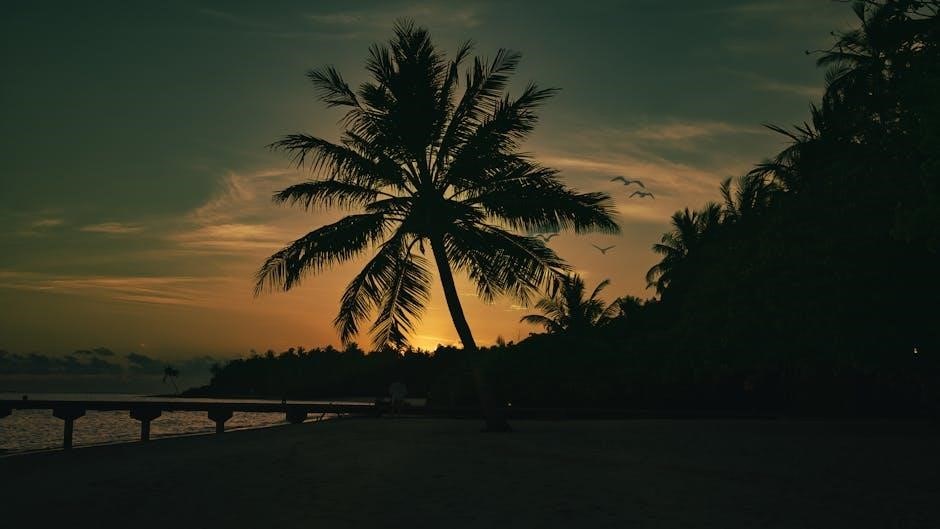
Cultural Significance
Birds hold profound cultural and spiritual significance in Hawaii, featuring prominently in mythology and traditions. The Nene and Pueo are revered as symbols of resilience and sacred guardians.
Birds in Hawaiian Mythology and Traditions
Birds play a vital role in Hawaiian mythology and traditions, often symbolizing spiritual guidance, protection, and ancestral connections. The Pueo, or Hawaiian Owl, is particularly revered as an aumakua, a family guardian spirit believed to protect and watch over descendants. In Hawaiian legends, birds are frequently depicted as messengers of the gods, embodying wisdom and resilience. Many native species, such as the Nene and Io, are woven into stories, songs, and dances, reflecting their deep cultural significance. These birds are not only integral to the natural landscape but also to the spiritual and historical identity of Hawaii, inspiring respect and admiration across generations.
Symbolism of Birds in Hawaiian Culture
Birds hold profound symbolic meanings in Hawaiian culture, representing spirituality, resilience, and interconnectedness with nature. The Nene, Hawaii’s state bird, symbolizes endurance and adaptability, while the Io, or Hawaiian Hawk, embodies strength and sovereignty. Birds are often associated with the mana, or spiritual power, and are believed to carry prayers to the gods. In traditional Hawaiian tattoos and carvings, birds frequently appear as motifs, signifying freedom, messenger roles, and the connection between the earthly and spiritual realms. Their imagery is also used in chants and proverbs, reinforcing their cultural and symbolic importance in Hawaiian identity and way of life.
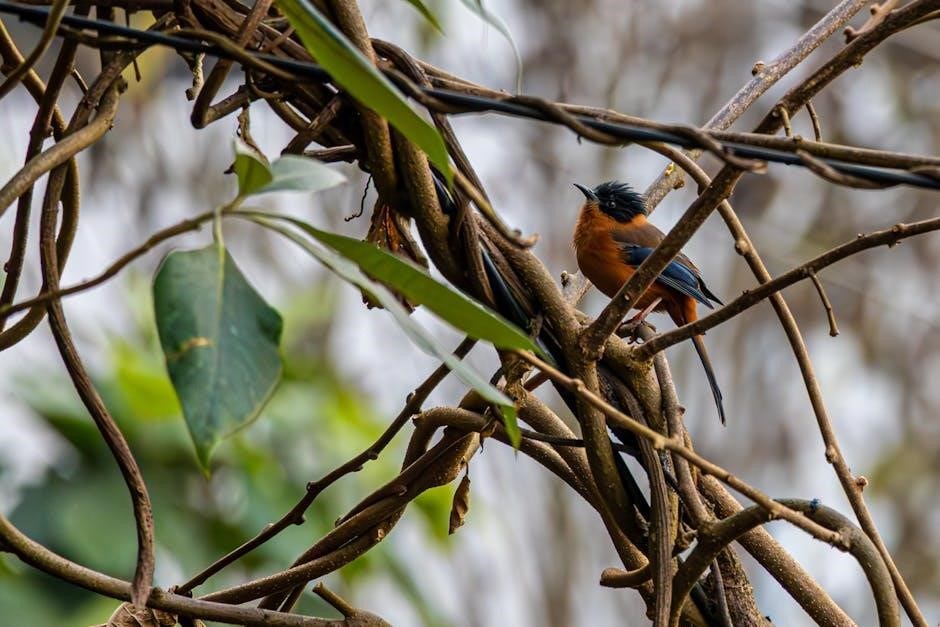
Birdwatching in Hawaii
Hawaii offers a unique birdwatching experience with its diverse avian species. From native endemics to introduced birds, the islands provide a variety of habitats to explore and observe wildlife.
Best Locations for Birding
Hawaii offers exceptional birdwatching opportunities across its diverse landscapes. The Hakalau Forest National Wildlife Refuge on the Big Island is renowned for native species like the Akepa and Akialoa. Oahu’s James Campbell National Wildlife Refuge is a hotspot for endangered waterbirds, such as the Hawaiian coot and gallinule. Maui’s Haleakalā National Park provides a habitat for the Nene, Hawaii’s state bird, while Kauai’s Kilauea Point National Wildlife Refuge is ideal for spotting seabirds like the Great Frigatebird and Red-footed Booby. Coastal areas and wetlands are perfect for observing migratory shorebirds, while forests attract endemic songbirds and honeycreepers. Each island offers unique birding experiences, making Hawaii a paradise for enthusiasts.
Essential Gear and Tips for Birders
For a successful birding experience in Hawaii, bring binoculars (7x or 8x magnification), a field guide, and a spotting scope for distant observations. Wear comfortable, weather-appropriate clothing and sturdy shoes for hiking. Sunscreen, a hat, and insect repellent are essentials. Carry a reusable water bottle and snacks for long excursions. Familiarize yourself with local regulations and obtain permits for protected areas. Respect wildlife by maintaining a safe distance and avoiding habitat disturbance. Keep a checklist or journal to track species sightings. Stay patient and quiet to maximize bird encounters. Enjoy the unique opportunity to observe Hawaii’s avian treasures responsibly and safely.
Endangered Species
Hawaii’s avian treasures face critical threats, with species like the Hawaiian Crow declared extinct in the wild. Conservation efforts are vital to protect these rare birds and their habitats.
The Hawaiian Crow and Other Critically Endangered Birds
The Hawaiian Crow, or ʻAlalā, is one of Hawaii’s most critically endangered birds, declared extinct in the wild in 2002. Conservation efforts, including captive breeding programs, aim to reintroduce this species. Other endangered birds, such as the Kāmaʻo and ʻĀmaui, highlight the urgent need for preservation. Habitat loss and invasive species have devastated native populations. Protected areas and recovery programs are essential to prevent further extinctions and restore ecological balance. These birds play vital roles in pollination and seed dispersal, making their survival crucial for Hawaii’s ecosystems. Continued conservation efforts are necessary to safeguard these unique and irreplaceable species.
Conservation-Reliant Species
Conservation-reliant species in Hawaii, such as the Nene and Hawaiian Crow, depend on continuous human intervention for survival. The Nene, Hawaii’s state bird, was once nearly extinct but thrives today due to captive breeding programs. Similarly, the Hawaiian Crow remains critically endangered, with recovery efforts focusing on habitat restoration and predator control. Other species, like the Akepa and Akikiki, rely on conservation initiatives to stabilize their populations. These birds often face threats like habitat loss and invasive predators, requiring ongoing protection. While progress has been made, their survival hinges on sustained conservation efforts, ensuring the preservation of Hawaii’s unique avian heritage for future generations.
Hawaii’s birds are a testament to nature’s uniqueness, facing threats like habitat loss and invasive species. Conservation and responsible tourism are vital to protect these avian treasures for future generations.
Hawaii’s avian diversity includes both native and introduced species, each with unique adaptations. Native birds, like the nene and Hawaiian crow, face significant threats from habitat loss and invasive species. Conservation efforts are critical to protect these endangered birds, often relying on protected areas and recovery programs. Introduced species, such as zebra doves and java sparrows, have impacts on ecosystems, requiring careful management. Hawaii’s birds also hold cultural significance, featuring prominently in mythology and traditions. Birdwatching offers opportunities to explore this diversity, with key locations like forests, wetlands, and coastal areas. Protecting Hawaii’s birds ensures the preservation of its rich ecological and cultural heritage for future generations.
Call to Action for Bird Conservation
Protecting Hawaii’s birds requires urgent action. Support conservation programs that safeguard habitats and reduce threats from invasive species. Educate yourself and others about the plight of native birds like the nene and Hawaiian crow. Participate in volunteer efforts, such as habitat restoration or bird counts, to make a direct impact. Advocate for policies that prioritize wildlife protection and climate resilience. Respect nesting areas and wildlife refuges to avoid disrupting sensitive ecosystems. By taking these steps, we can ensure the survival of Hawaii’s unique avian treasures for generations to come. Together, we can make a difference in preserving this irreplaceable natural heritage.
